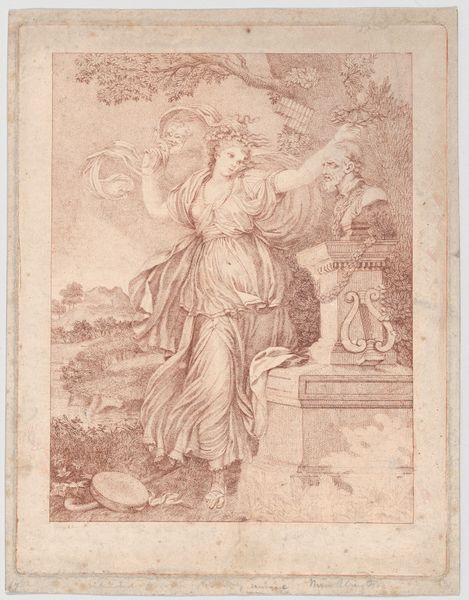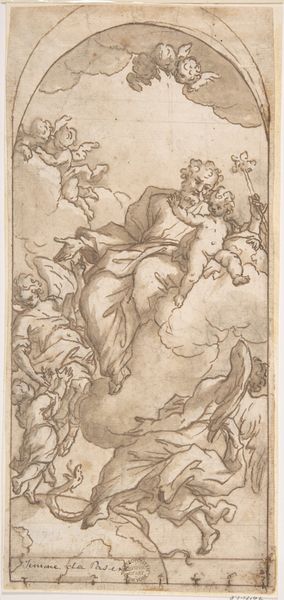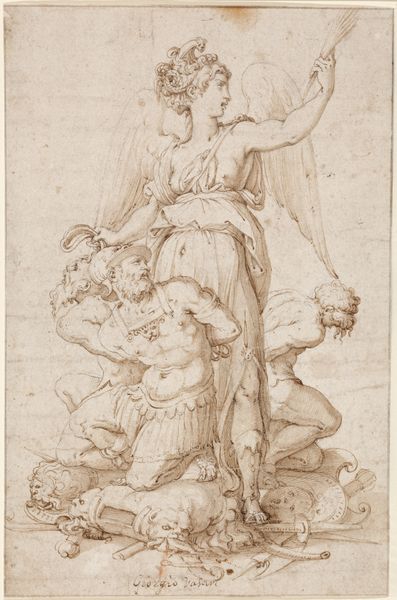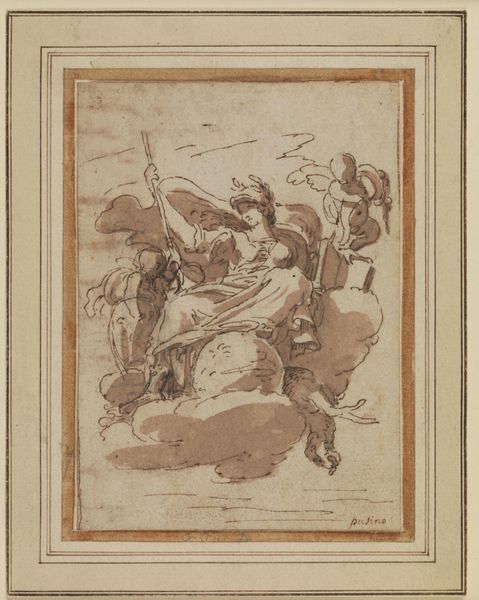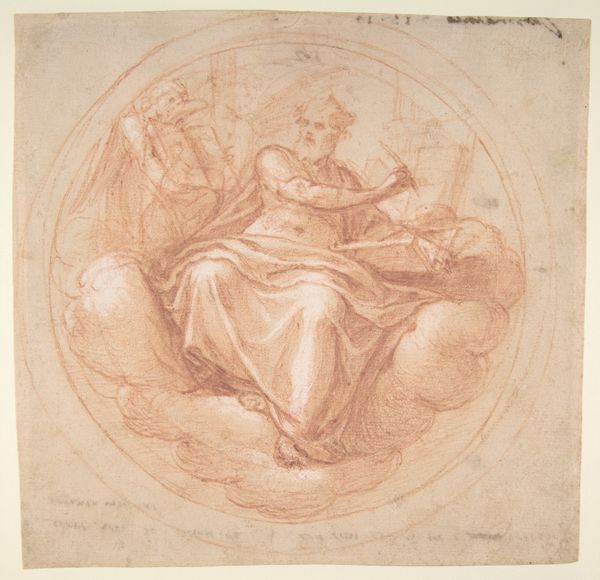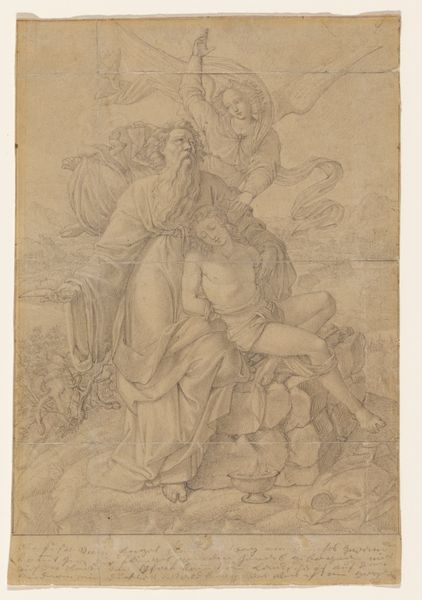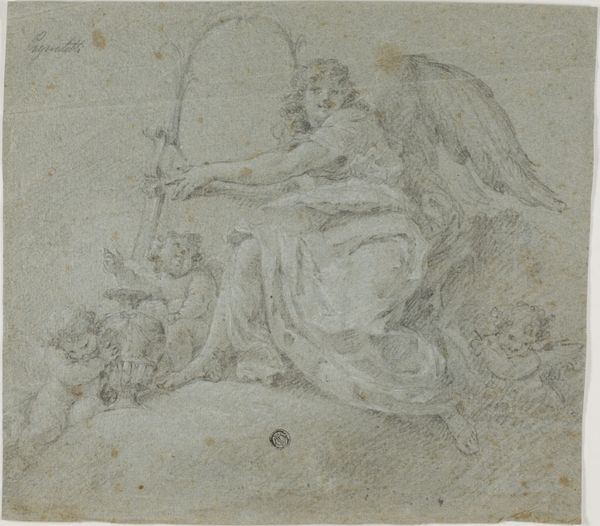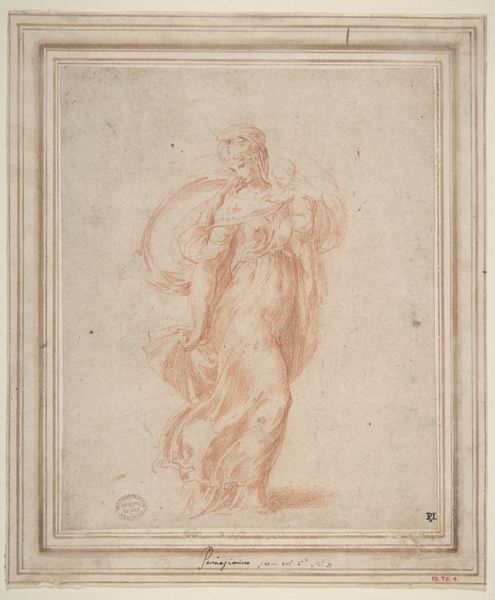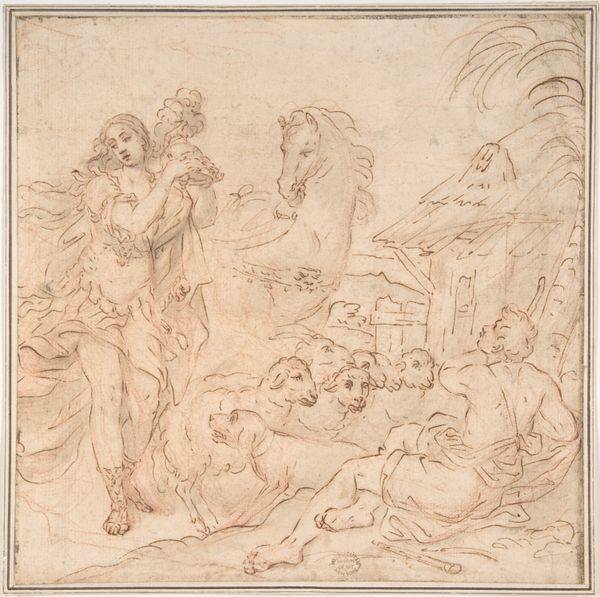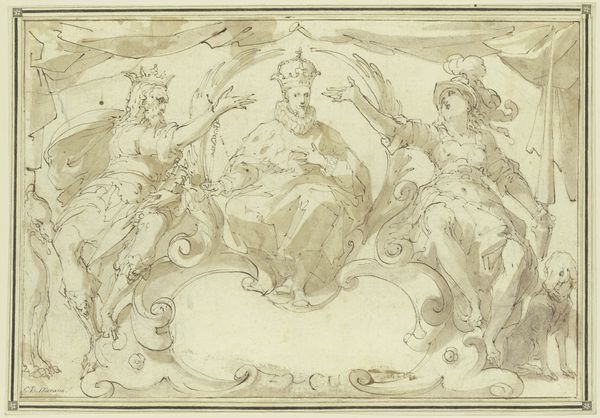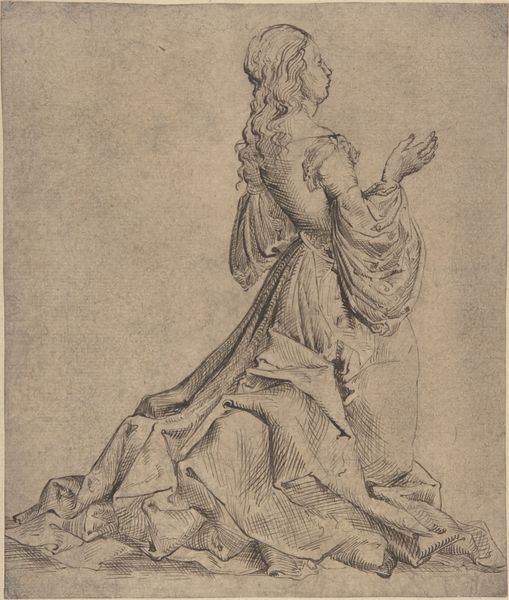
drawing, coloured-pencil, print
#
portrait
#
drawing
#
coloured-pencil
#
allegory
#
ink painting
#
animal
# print
#
classical-realism
#
coloured pencil
#
history-painting
Dimensions: 6 15/16 x 6 5/8 in. (17.7 x 16.9 cm)
Copyright: Public Domain
Curator: Ah, here we have an 18th-century drawing titled "Allegory of Asia, from the Four Continents," currently residing here at The Met. Editor: The sepia tones give it an immediate sense of faded grandeur, almost like a rediscovered fresco fragment. It’s compelling in its restraint. Curator: It's believed to be rendered with coloured pencil and, perhaps surprisingly, printmaking techniques are incorporated into the drawing. Think about that layering of media for a moment. It's an object intended for reproduction, made by hand, yet aspiring to monumentality through allegorical representation. Editor: Interesting… considering the cultural assumptions inherent in such allegories. The woman is the embodiment of a continent, complete with, if I am not mistaken, a camel, and an offering bowl for incense. The creation of types, for both the animals and the peoples imagined to inhabit a space, certainly speak of European constructions of Asia. Where was something like this intended to be viewed, or consumed? Curator: Prints and drawings like these would have circulated among elite circles. A fascinating aspect is the material culture involved— the pigments, paper quality, and even the craftsman's skill – were status markers in themselves. What was the labor like behind its production, who were the hands and workshops behind something that is “anonymous?" Editor: Indeed. The lack of attribution to a specific artist invites broader questions of power and representation. Allegories were frequently used to reinforce socio-political hierarchies and this piece likely played a role in visually constructing European ideas of the "Orient" for European audiences. This, no doubt, perpetuated specific attitudes about this geographic area of the globe and those living there. Curator: Absolutely. And looking closer, we might see the subtle techniques through which the artist has represented specific textures—the sheen on what seems like her shield or breastplate, in contrast to the softness of the animal's fur and the folds of her robe. These effects would likely have appealed to those accustomed to assessing luxury goods. How does visual rendering construct luxury? Editor: Thinking about its contemporary value in a museum like The Met…it still holds an aesthetic power, yet the onus is on us to critically examine the historical context from which it emerged, as a reminder of visual constructs created in a global imaginary. Curator: Exactly. By paying attention to the object as a site of intersection for material value and ideology, we can understand it within the networks of production, reception, and power relations, still unfolding.
Comments
No comments
Be the first to comment and join the conversation on the ultimate creative platform.
